-
About
- About Listly
- Community & Support
- Howto
- Chrome Extension
- Bookmarklet
- WordPress Plugin
- Listly Premium
- Privacy
- Terms
- DMCA Copyright
- © 2010-2025 Boomy Labs

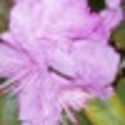 Marie Jones
Marie Jones
Listly by Marie Jones
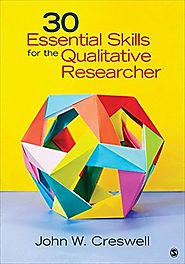
30 Essential Skills for the Qualitative Researcher fills a gap in introductory literature on qualitative inquiry by providing practical "how-to" information for beginning researchers in the social, behavioral, and health sciences. Author John W. Creswell draws on years of teaching, writing, and conducting his own projects to offer effective techniques and procedures with many applied examples from research design, qualitative inquiry, and mixed methods. Creswell defines what a skill is, and acknowledges that while there may be more than 30 that an individual will use and perfect, the skills presented in this book are crucial for a new qualitative researcher starting a qualitative project.

Bjarke Frellesvig describes the development of the Japanese language from its recorded beginnings until the present day as reflected by the written sources and historical record. Beginning with a description of the oldest attested stage of the language, Old Japanese (approximately the eighth century AD), and then tracing the changes which occurred through the Early Middle Japanese (800 1200), Late Middle Japanese (1200 1600) and the Modern Japanese (1600 onwards) periods, a complete internal history of the language is examined and discussed. This account provides a comprehensive study of how the Japanese language has developed and adapted, providing a much needed resource for scholars. A History of the Japanese Language is invaluable to all those interested in the Japanese language and also students of language change generally."

This book deals chronologically with the history of writing in Japan, a subject which spans a period of 2,000 years, beginning with the transmission of writing from China in about the first or second century AD, and concluding with the use of written Japanese with computers. Topics dealt with include the adoption of Chinese writing and its subsequent adaptation in Japan, forms of writing employed in works such as the "Kojiki" and "Man'yoshu," development of the "kana" syllabaries, evolution of mixed character-"kana" orthography, historical "kana" usage, the rise of literacy during the Edo period, and the main changes that have taken place in written Japanese in the modern period (ca. 1868 onwards). This is the first full-length work in a European language to provide the Western reader with an overall account of the subject concerned, based on extensive examination of both primary and secondary materials.

In October 1735, James Oglethorpe’s Georgia Expedition set sail from London, bound for Georgia. Two hundred and twenty-seven passengers boarded two merchant ships accompanied by a British naval vessel and began a transformative voyage across the Atlantic that would last nearly five months. Chronicling their passage in journals, letters, and other accounts, the migrants described the challenges of physical confinement, the experiences of living closely with people from different regions, religions, and classes, and the multi-faceted character of the ocean itself.
Using their specific journey as his narrative arc, Stephen Berry’s A Path in the Mighty Waters tells the broader and heretofore underexplored story of how people experienced their crossings to the New World in the eighteenth century. During this time, hundreds of thousands of Europeans—mainly Irish and German—crossed the Atlantic as part of their martial, mercantile, political, or religious calling. Histories of these migrations, however, have often erased the ocean itself, giving priority to activities performed on solid ground. Reframing these histories, Berry shows how the ocean was more than a backdrop for human events; it actively shaped historical experiences by furnishing a dissociative break from normal patterns of life and a formative stage in travelers’ processes of collective identification. Shipboard life, serving as a profound conversion experience for travelers both spiritually and culturally, resembled the conditions of a frontier or border zone where the chaos of pure possibility encountered an inner need for stability and continuity, producing permutations on existing beliefs.
Drawing on an impressive array of archival collections, Berry’s vivid and rich account reveals the crucial role the Atlantic played in history and how it has lingered in American memory as a defining experience.
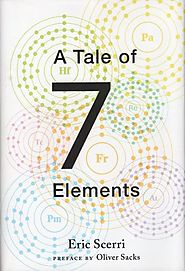
In 1913, English physicist Henry Moseley established an elegant method for "counting" the elements based on atomic number, ranging them from hydrogen (#1) to uranium (#92). It soon became clear, however, that seven elements were mysteriously missing from the line up--seven elements unknown to science.
In his well researched and engagingly narrative, Eric Scerri presents the intriguing stories of these seven elements--protactinium, hafnium, rhenium, technetium, francium, astatine and promethium. The book follows the historical order of discovery, roughly spanning the two world wars, beginning with the isolation of protactinium in 1917 and ending with that of promethium in 1945. For each element, Scerri traces the research that preceded the discovery, the pivotal experiments, the personalities of the chemists involved, the chemical nature of the new element, and its applications in science and technology. We learn for instance that alloys of hafnium--whose name derives from the Latin name for Copenhagen (hafnia)--have some of the highest boiling points on record and are used for the nozzles in rocket thrusters such as the Apollo Lunar Modules. Scerri also tells the personal tales of researchers overcoming great obstacles. We see how Lise Meitner and Otto Hahn--the pair who later proposed the theory of atomic fission--were struggling to isolate element 91 when World War I intervened, Hahn was drafted into the German army's poison gas unit, and Meitner was forced to press on alone against daunting odds. The book concludes by examining how and where the twenty-five new elements have taken their places in the periodic table in the last half century.
A Tale of Seven Elements paints a fascinating picture of chemical research--the wrong turns, missed opportunities, bitterly disputed claims, serendipitous findings, accusations of dishonesty--all leading finally to the thrill of discovery.
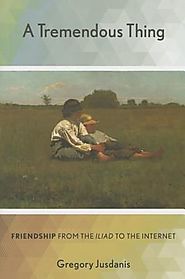
"Why did you do all this for me?" Wilbur asked. "I don't deserve it. I've never done anything for you."
You have been my friend, replied Charlotte. That in itself is a tremendous thing.
from Charlotte's Web by E. B. White
Friendship encompasses a wide range of social bonds, from playground companionship and wartime camaraderie to modern marriages and Facebook links. For many, friendship is more meaningful than familial ties. And yet it is our least codified relationship, with no legal standing or bureaucratic definition. In A Tremendous Thing, Gregory Jusdanis explores the complex, sometimes contradictory nature of friendship, reclaiming its importance in both society and the humanities today. Ranging widely in his discussion, he looks at the art of friendship and friendship in art, finding a compelling link between our need for friends and our engagement with fiction. Both, he contends, necessitate the possibility of entering invented worlds, of reading the minds of others, and of learning to live with people.
Investigating the ethics, aesthetics, and politics of friendship, Jusdanis draws from the earliest writings to the present, from the Epic of Gilgamesh and the Iliad to Charlotte's Web and Brokeback Mountain, as well as from philosophy, sociology, evolutionary biology, psychology, and political theory. He asks: What makes friends stay together? Why do we associate friendship with mourning? Does friendship contribute to the formation of political communities? Can friends desire each other? The history of friendship demonstrates that human beings are a mutually supportive species with an innate aptitude to envision and create ties with others. At a time when we are confronted by war, economic inequality, and climate change, Jusdanis suggests that we reclaim friendship to harness our capacity for cooperation and empathy."

This anthology reconsiders crucial aspects of abstraction's resurgence in contemporary art, exploring three equally significant strategies explored in current practice: formal abstraction, economic abstraction, and social abstraction. In the 1960s, movements as diverse as Latin American neo-concretism, op art and "eccentric abstraction" disrupted the homogeneity, universality, and rationality associated with abstraction. These modes of abstraction opened up new forms of engagement with the phenomenal world as well as the possibility of diverse readings of the same forms, ranging from formalist and transcendental to socio-economic and conceptual.
In the 1980s, the writings of Peter Halley, Fredric Jameson, and others considered an increasingly abstracted world in terms of its economic, social, and political conditions -- all of which were increasingly manifested through abstract codes or sites of style. Such economic abstraction is primarily addressed in art through subject or theme, but Deleuze and Guattari's notion of art as abstract machine opens up possibilities for art's role in the construction of a new kind of social reality. In more recent art, a third strand of abstraction emerges: a form of social abstraction centered on the strategy of withdrawal. Social abstraction implies stepping aside, a movement away from the mainstream, suggesting the possibilities for art to maneuver within self-organized, withdrawn initiatives in the field of cultural production.
Artists surveyed include: Lee Bontecou, Louise Bourgeois, Amilcar de Castro, Paul Cezanne, Lygia Clark, Kajsa Dahlberg, Stephan Dillemuth, Marcel Duchamp, Gardar Eide Einarsson, Gunther Forg, Liam Gillick, Ferreira Gullar, Jean Helion, Eva Hesse, Jakob Jakobsen, Jasper Johns, Donald Judd, Wassily Kandinsky, Sol LeWitt, Piet Mondrian, Bruce Nauman, Helio Oiticica, Blinky Palermo, Lygia Pape, Mai-Thu Perret, Jackson Pollock, Tobias Rehberger, Bridget Riley, Emily Roysden, Lucas Samaras, Julian Stanczak, Frank Stella, Hito Steyerl, Theo van Doesburg
Writers include: Alfred H. Barr Jr., Ina Blom, Lynne Cooke, Anthony Davies, Judi Freeman, Peter Halley, Brian Holmes, Joe Houston, Fredric Jameson, Lucy R. Lippard, Sven Lutticken, Nina Montmann, Gabriel Perez-Barreiro, Catherine Queloz, Gerald Raunig, Irit Rogoff, Meyer Schapiro, Kirk Varnedoe, Stephan Zepke"
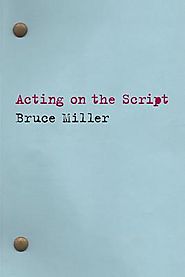
(Applause Books). Mastery of craft depends on repetition: the more opportunities student actors have to be guided through analyzing scripts, the more likely they are to develop a reliable process for making choices when the time comes to work independently. That's why Acting on the Script contains eight short plays, which can be used independently or as parts of one full-length play, giving aspiring actors the practice they need to tell the story of the play and of their characters clearly, believably, and compellingly. With each new scene, readers are given the opportunity to think through the analysis and synthesis process independently, then they are guided clearly through that process. The first section reintroduces the basic elements of acting craft. The book then lays out how these elements relate to a script in general and then more specifically by using a short play to illustrate the basic principles. The second section focuses on specific analysis and synthesis problems using original scenes especially composed to help students develop their analysis and choice-making skills and to address individual acting issues. The plays, already tested in classes and two productions (one professional and one college), are filled with the kinds of acting problems that beginning actors often have trouble with and need to learn to solve. In addition, specific problems that actors might have with certain types of material are addressed as well.

How did French musicians and critics interpret jazz—that quintessentially American music—in the mid-twentieth century? How far did players reshape what they learned from records and visitors into more local jazz forms, and how did the music figure in those angry debates that so often suffused French cultural and political life? After Django begins with the famous interwar triumphs of Josephine Baker and Django Reinhardt, but, for the first time, the focus here falls on the French jazz practices of the postwar era. The work of important but neglected French musicians such as André Hodeir and Barney Wilen is examined in depth, as are native responses to Americans such as Miles Davis and Thelonious Monk. The book provides an original intertwining of musical and historical narrative, supported by extensive archival work; in clear and compelling prose, Perchard describes the problematic efforts towards aesthetic assimilation and transformation made by those concerned with jazz in fact and in idea, listening to the music as it sounded in discourses around local identity, art, 1968 radicalism, social democracy, and post colonial politics.

In this important new book the renowned historian Serge Gruzinski returns to two episodes in the sixteenth century which mark a decisive stage in global history and show how China and Mexico experienced the expansion of Europe.In the early 1520s, Magellan set sail for Asia by the Western route, Cortes seized Mexico and some Portuguese based in Malacca dreamed of colonizing China. The Aztec Eagle was destroyed but the Chinese Dragon held strong and repelled the invaders - after first seizing their cannon. For the first time, people from three continents encountered one other, confronted one other and their lives became entangled. These events were of great interest to contemporaries and many people at the time grasped the magnitude of what was going on around them. The Iberians succeeded in America and failed in China. The New World became inseparable from the Europeans who were to conquer it, while the Celestial Empire became, for a long time to come, an unattainable goal. Gruzinski explores this encounter between civilizations that were different from one another but that already fascinated contemporaries, and he shows that our world today bears the mark of this distant age. For it was in the sixteenth century that human history began to be played out on a global stage. It was then that connections between different parts of the world began to accelerate, not only between Europe and the Americas but also between Europe and China. This is what is revealed by a global history of the sixteenth century, conceived as another way of reading the Renaissance, less Eurocentric and more in tune with our age.

Conventional understandings of the family in nineteenth-century literary studies depict a venerated institution rooted in sentiment, sympathy, and intimacy. American Blood upends this notion, showing how novels of the period frequently emphasize the darker sides of the vaunted domestic unit. Rather than a source of security and warmth, the family emerges as exclusionary, deleterious to civic life, and antagonistic to the political enterprise of the United States.
Through inventive readings supported by cultural-historical research, Holly Jackson explores critical depictions of the family in a range of both canonical and forgotten novels. Republican opposition to the generational transmission of property in early America emerges in Nathaniel Hawthorne's The House of the Seven Gables (1851). The "tragic mulatta" trope in William Wells Brown's Clotel (1853) is revealed as a metaphor for sterility and national death, linking mid-century theories of hybrid infertility to anxieties concerning the nation's crisis of political continuity. A striking interpretation of Harriet Beecher Stowe's Dred (1856) occupies a subsequent chapter, as Jackson uncovers how the author most associated with the enshrinement of domestic kinship deconstructs both scientific and sentimental conceptions of the family. A focus on feminist views of maternity and the family anchor readings of Anna E. Dickinson's What Answer? (1868) and Sarah Orne Jewett's The Country of the Pointed Firs (1896), while a chapter on Pauline Hopkins's Hagar's Daughter (1901) examines how it engages with socio-scientific discourses of black atavism to expose the family's role not simply as a metaphor for the nation but also as the mechanism for the reproduction of its unequal social relations.
Cogently argued, clearly written, and anchored in unconventional readings, American Blood presents a series of lively arguments that will interest literary scholars and historians of the family, as it reveals how nineteenth-century novels imagine-even welcome-the decline of the family and the social order that it supports.

Providing a lively and concise review of the conduct of American foreign policy since World War II, early chapters are strengthened by new historical findings, while recent developments since 9/11 receive thorough treatment and analysis. A stand-alone chapter on the Iraq War provides essential historical context as well as a detailed assessment of recent events across the Middle East. The book's presentation and usefulness are enhanced by new tables and figures, updated photos and maps, and annotated web resources.

From “an eye for an eye” to debates over capital punishment, humanity has a long and controversial relationship with doling out justice for criminal acts. Today, crime and punishment remain significant parts of our culture, but societies vary greatly on what is considered criminal and how it should be punished. In this global survey of crime and punishment throughout history, Mitchel P. Roth examines how and why we penalize certain activities, and he scrutinizes the effectiveness of such efforts in both punishing wrongdoers and bringing a sense of justice to victims.
Drawing on anthropology, archaeology, folklore, and literature, Roth chronicles the global history of crime and punishment—from early civilizations to the outlawing of sex crimes and serial homicide to the development of organized crime and the threat today of global piracy. He explores the birth of the penitentiary and the practice of incarceration as well as the modern philosophy of rehabilitation, arguing that these are perhaps the most important advances in the effort to safeguard citizens from harm. Looking closely at the retributions societies have condoned, Roth also look at execution and its many forms, showing how stoning, hemlock, the firing squad, and lethal injection are considered either barbaric or justified across different cultures. Ultimately, he illustrates that despite advances in every level of human experience, there is remarkable continuity in what is considered a crime and the sanctions administered.
Perfect for students, academics, and general readers alike, this interdisciplinary book provides a fascinating look at criminality and its consequences.

Today in the United States, there are more than five hundred federally recognized Indigenous nations comprising nearly three million people, descendants of the fifteen million Native people who once inhabited this land. The centuries-long genocidal program of the US settler-colonial regimen has largely been omitted from history. Now, for the first time, acclaimed historian and activist Roxanne Dunbar-Ortiz offers a history of the United States told from the perspective of Indigenous peoples and reveals how Native Americans, for centuries, actively resisted expansion of the US empire.
In An Indigenous Peoples’ History of the United States, Dunbar-Ortiz adroitly challenges the founding myth of the United States and shows how policy against the Indigenous peoples was colonialist and designed to seize the territories of the original inhabitants, displacing or eliminating them. And as Dunbar-Ortiz reveals, this policy was praised in popular culture, through writers like James Fenimore Cooper and Walt Whitman, and in the highest offices of government and the military. Shockingly, as the genocidal policy reached its zenith under President Andrew Jackson, its ruthlessness was best articulated by US Army general Thomas S. Jesup, who, in 1836, wrote of the Seminoles: “The country can be rid of them only by exterminating them.”
Spanning more than four hundred years, this classic bottom-up peoples’ history radically reframes US history and explodes the silences that have haunted our national narrative.

This book, now in its fifth edition, provides a comprehensive introduction to Buddhist psychology and counselling, exploring key concepts in psychology and practical applications in mindfulness-based counselling techniques. This integrated study uses Buddhist philosophy of mind, psychology, ethics and contemplative methods to focus on the 'emotional rhythm of our lives', opening up new avenues for mental health.De Silva presents a range of management techniques for mental health issues including stress, anger, depression, addictions and grief. He moves beyond the restriction of mental health issues to 'damage control', instead encouraging personal growth and positive emotions of compassion, forgiveness, generosity, equanimity and, ultimately, emotional balance.This book blends Western psychology and philosophy and ancient wisdom and contemporary thought to provide a key contribution to cognitive sciences, emotion studies, moral psychology and psychotherapy counselling. This new edition contains nine new chapters and an additional second part which focuses on counselling and mindfulness-based techniques in therapy.
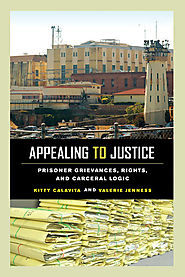
Having gained unique access to California prisoners and corrections officials and to thousands of prisoners’ written grievances and institutional responses, Kitty Calavita and Valerie Jenness take us inside one of the most significant, yet largely invisible, institutions in the United States. Drawing on sometimes startlingly candid interviews with prisoners and prison staff, as well as on official records, the authors walk us through the byzantine grievance process, which begins with prisoners filing claims and ends after four levels of review, with corrections officials usually denying requests for remedies. Appealing to Justice is both an unprecedented study of disputing in an extremely asymmetrical setting and a rare glimpse of daily life inside this most closed of institutions. Quoting extensively from their interviews with prisoners and officials, the authors give voice to those who are almost never heard from. These voices unsettle conventional wisdoms within the sociological literature—for example, about the reluctance of vulnerable and/or stigmatized populations to name injuries and file claims, and about the relentlessly adversarial subjectivities of prisoners and correctional officials—and they do so with striking poignancy. Ultimately, Appealing to Justice reveals a system fraught with impediments and dilemmas, which delivers neither justice, nor efficiency, nor constitutional conditions of confinement.

This easy-to-use and practical book offers teachers 50 content area learning strategies--each with directions, models and templates to design effective lessons that scaffold learning strategies with literacy enrichment for every child in the classroom. This 'teacher friendly' manual provides the models and templates for teachers to use in planning lessons on effective learning strategies for students to understand content level materials. In a non-threatening manner, this text offers a concise yet complete review of the research supporting each of the strategies contained in this book so that it can be used by teachers and administrators working with federal programs such as No Child Left Behind, Reading First, Title I, ESL programs, as well as IEP, resource and challenged learners. In addition, every chapter contains a brief review of research that supports the use of strategies for each area of comprehension 50 strategies are featured in what it will undoubtly become an indispensable book for any teacher. Proven favorites as well as new strategies which the authors have field tested in classrooms include: Stop the Process, Heading Through a Picture Walk, T.H.I.E.V.E.S., Four Square Reciprocal Teaching, Readers' Theatre, Grasp the Headings, Partner Knowledge Rater +, and First, the Questions."
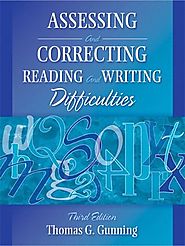
This popular, practical book provides numerous examples and thorough coverage of procedures for assessing and instructing struggling readers of all ages. In keeping with current theory, the text emphasizes prevention and early intervention and the belief that virtually all students can learn to read and write on a proficient level if given the proper assistance. For current and future K-8 teachers and reading specialists.

Surveys over the last twenty years have seen an ever-growing number of Americans disclaim religious affiliations and instead check the "none" box. In the first sociological exploration of organized secularism in America, Richard Cimino and Christopher Smith show how one segment of these "nones" have created a new, cohesive atheist identity through activism and the creation of communities.
According to Cimino and Smith, the new upsurge of atheists is a reaction to the revival of religious fervor in American politics since 1980. Feeling overlooked and underrepresented in the public sphere, atheists have employed a wide variety of strategies-some evangelical, some based on identity politics-to defend and assert themselves against their ideological opponents. These strategies include building and maintaining communities, despite the absence of the kinds of shared rituals, texts, and laws that help to sustain organized religions.
Drawing on in-depth interviews with self-identified atheist, secularist, and humanist leaders and activists, as well as extensive observations and analysis of secular gatherings and media, Cimino and Smith illustrate how atheists organize and align themselves toward common goals, and how media-particularly web-based media-have proven invaluable in connecting atheists to one another and in creating a powerful virtual community. Cimino and Smith suggest that secularists rely not only on the Internet for community-building, but on their own new forms of ritual.
This groundbreaking study will be essential reading for anyone seeking to understand the growing atheist movement in America.

There's nothing as wonderful as starting to heal, waking up in the morning and knowing that nobody can hurt you if you don't let them.
Beginning to Heal offers hope and guidance for all survivors starting the healing journey. No matter how great your pain today, you can not only heal but thrive. Based on the authors' bestseller The Courage to Heal, this Revised Edition of Beginning to Heal takes you through the key stages of the healing process, from crisis times to breaking the silence, grief, and anger, to resolution and moving on. It includes inspirational highlights, clear explanations, practical suggestions, and compelling accounts of survivors' pain, their strength, and their triumphs.

Are corporations citizens? Is political inequality a necessary aspect of a democracy or something that must be stamped out? These are the questions that have been at the heart of the debate surrounding campaign finance reform for nearly half a century. But as Robert E. Mutch demonstrates in this fascinating book, these were not always controversial matters. The tenets that corporations do not count as citizens, and that self-government functions best by reducing political inequality, were commonly held up until the early years of the twentieth century, when Congress recognized the strength of these principles by prohibiting corporations from making campaign contributions, passing a disclosure law, and setting limits on campaign expenditures. But conservative opposition began to appear in the 1970s. Well represented on the Supreme Court, opponents of campaign finance reform won decisions granting First Amendment rights to corporations, and declaring the goal of reducing political inequality to be unconstitutional. Buying the Vote analyzes the rise and decline of campaign finance reform by tracking the evolution of both the ways in which presidential campaigns have been funded since the late nineteenth century. Through close examinations of major Supreme Court decisions, Mutch shows how the Court has fashioned a new and profoundly inegalitarian definition of American democracy. Drawing on rarely studied archival materials on presidential campaign finance funds, Buying the Vote is an illuminating look at politics, money, and power in America.

This personal, wide-ranging, and contemplative volume--and the last book Barthes published--finds the author applying his influential perceptiveness and associative insight to the subject of photography. To this end, several black-and-white photos (by the likes of Avedon, Clifford, Hine, Mapplethorpe, Nadar, Van Der Zee, and so forth) are reprinted throughout the text.

How smallpox, or Variola, caused widespread devastation during the European colonization of the Americas is a well-known story. But as historian Paul Kelton informs us, that’s precisely what it is: a convenient story. In Cherokee Medicine, Colonial Germs Kelton challenges the “virgin soil thesis,” or the widely held belief that Natives’ lack of immunities and their inept healers were responsible for their downfall. Eschewing the metaphors and hyperbole routinely associated with the impact of smallpox, he firmly shifts the focus to the root cause of indigenous suffering and depopulation—colonialism writ large; not disease.
Kelton’s account begins with the long, false dawn between 1518 and the mid-seventeenth century, when sporadic encounters with Europeans did little to bring Cherokees into the wider circulation of guns, goods, and germs that had begun to transform Native worlds. By the 1690s English-inspired slave raids had triggered a massive smallpox epidemic that struck the Cherokees for the first time. Through the eighteenth century, Cherokees repeatedly responded to real and threatened epidemics—and they did so effectively by drawing on their own medicine. Yet they also faced terribly destructive physical violence from the British during the Anglo-Cherokee War (1759–1761) and from American militias during the Revolutionary War. Having suffered much more from the scourge of war than from smallpox, the Cherokee population rebounded during the nineteenth century and, without abandoning Native medical practices and beliefs, Cherokees took part in the nascent global effort to eradicate Variola by embracing vaccination.
A far more complex and nuanced history of Variola among American Indians emerges from these pages, one that privileges the lived experiences of the Cherokees over the story of their supposedly ill-equipped immune systems and counterproductive responses. Cherokee Medicine, Colonial Germs shows us how Europeans and their American descendants have obscured the past with the stories they left behind, and how these stories have perpetuated a simplistic understanding of colonialism.

A major survey including new and celebrated works by Turner Prize–winning artist Chris Ofili. Set to accompany the first major museum show in the United States of contemporary British artist Chris Ofili, this richly illustrated volume surveys two decades of artworks that meld figuration, abstraction, and decoration to yield hybrid juxtapositions of high and low culture. Best known for intricately constructed works featuring beadlike dots of paint, elephant dung, and images culled from popular media, Ofili’s unique lexicon combines African culture, Western art history, and hip-hop music, spanning a wide variety of sources which include the Bible, Zimbabwean cave paintings, Blaxploitation films, and William Blake’s poems. Animated by exotic characters, outlandish landscapes, and folkloric myths, Ofili’s most recent work resonates with references to the paintings of Henri Matisse and Paul Gauguin. This compelling new book offers a fresh perspective on the artist’s vital practice, which both celebrates and calls into question the power of images and their ability to address fundamental questions of representation.

Containing 30 essays that embody the history of photography, this collection includes contributions from Niepce, Daguerre, Fox, Talbot, Poe, Emerson, Hine, Stieglitz, and Weston, among others.
